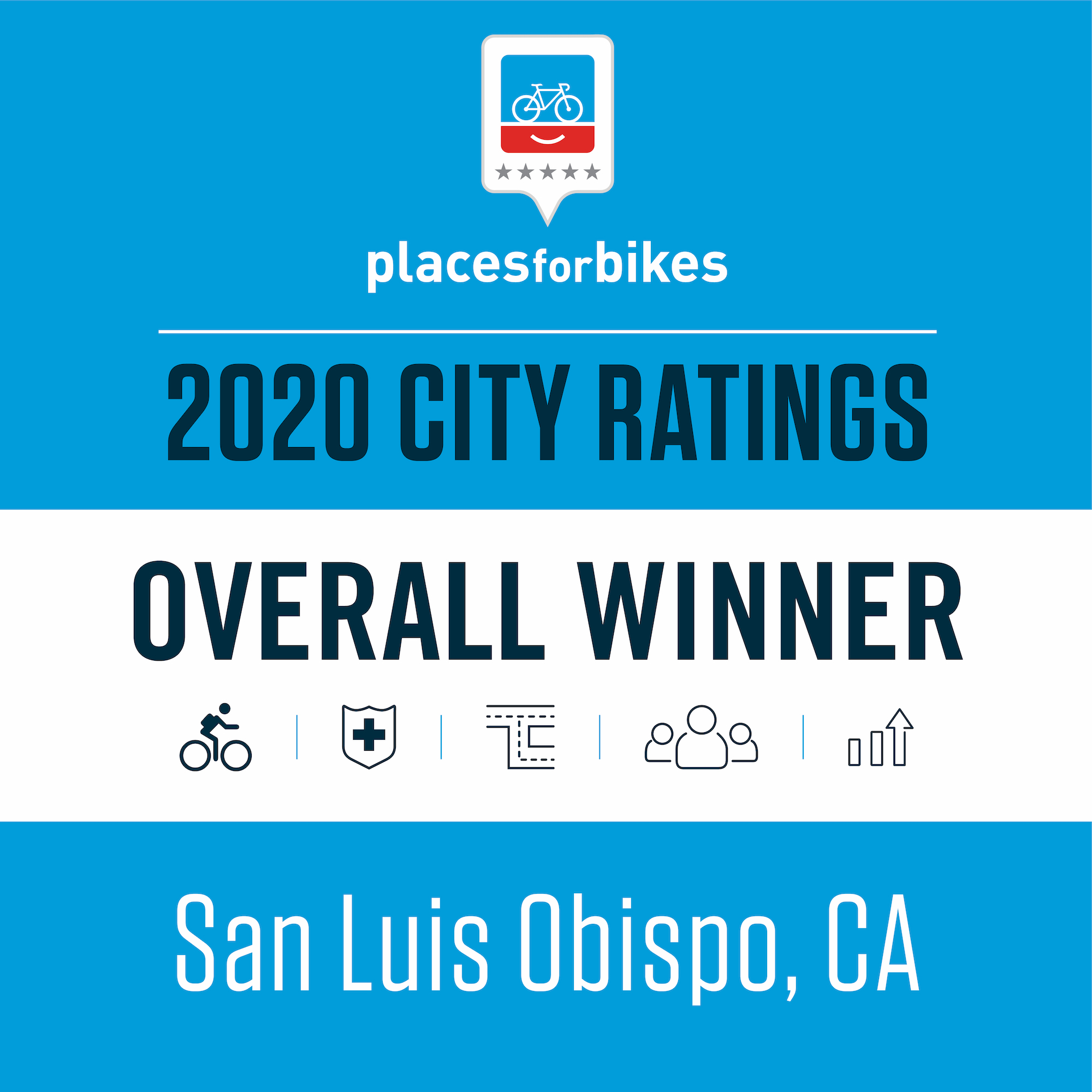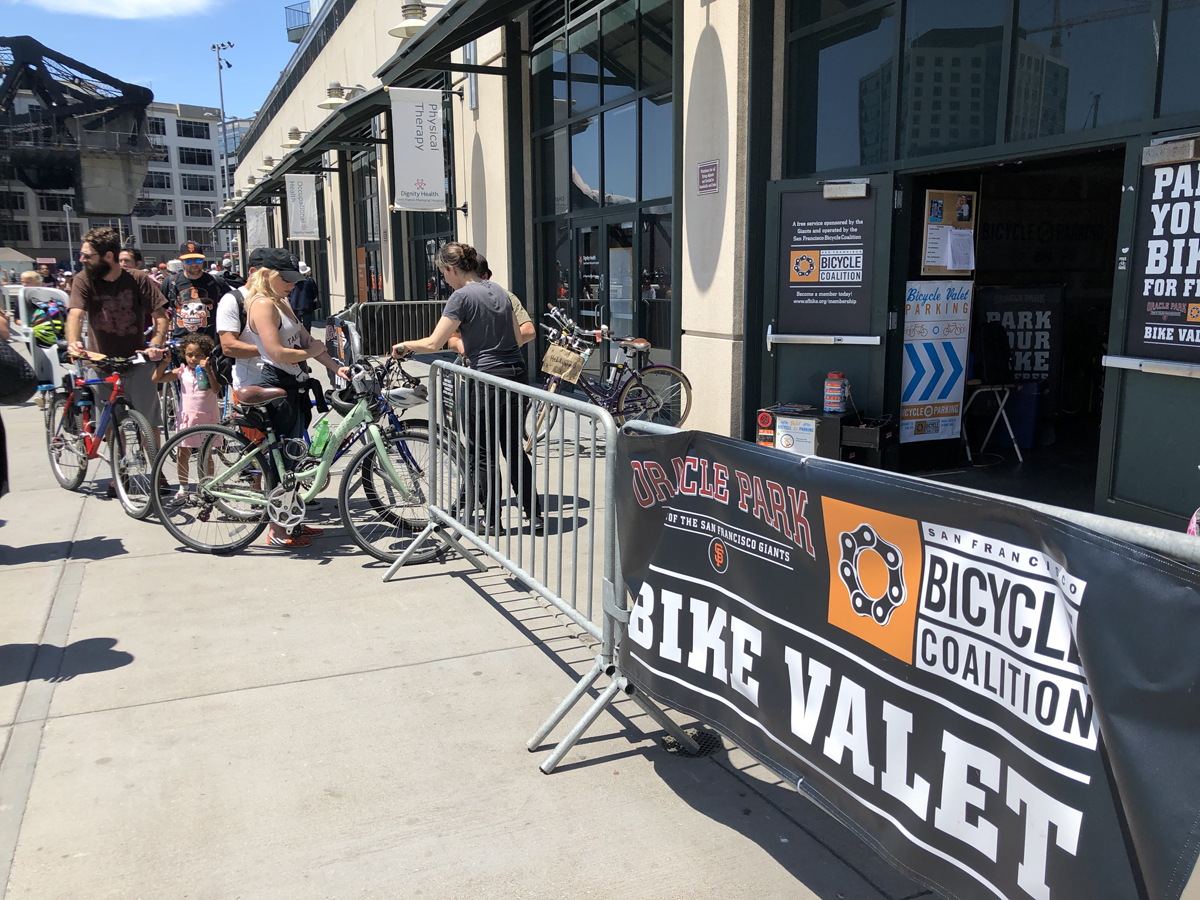Other western state cities ranked in the top-10 include Missoula, Montana (5th), as well as Fort Collins (7th) and Denver (8th), Colorado.
BOULDER, Colorado. (June 9, 2020) — PeopleForBikes has released its third annual ratings of the best cities for bicycling in the U.S. The PeopleForBikes City Ratings program is a data-driven analysis that evaluates more than 550 cities and communities and shows city leaders how they can invest to make bicycling better for all residents and visitors.
City Ratings are scored across five key indicators: Ridership (how many people are riding bikes), Safety (how safe is it to ride bikes), Network (how easy is it for people to bike where they want to go), Reach (how well the network serves all parts of the community), and Acceleration (how fast the community is working to improve biking).

Topping this year’s overall ratings are San Luis Obispo, CA (1); Madison, WI (2); Santa Barbara, CA (3). Rounding out the top ten are: Washington, DC (4); Missoula, MT (5); Rogers, AR (6); Fort Collins, CO (7); Denver, CO (8); Grand Forks, ND (9); Fayetteville, AR (10).
Other cities in the western region, such as Salt Lake City, Utah and Boise, Idaho have either dropped down the rankings or stagnated, indicating they haven’t capitalized on their previous rankings by continuing to complete bicycle-related projects.
Salt Lake City’s network is relatively high quality, and ridership is increasing in the downtown area where the network is concentrated, although there are still concerns about safety. The city’s commitment to expanding the network appears to be waning, however, and without buy-in and expansion throughout the valley, the area’s ranking will likely remain mired in mediocrity. Boise’s bicycle network needs improvement, but the city’s apparently lack of commitment are keeping ridership and perception of safety down.
On the other hand, Missoula, Montana which ranked as the 5th highest city in this year’s survey is considered to be a highly safe city in which to ride, and the city government is perceived to be making significant progress towards continuing the growth of cycling as an alternate form of transportation.
As a small resort town (population 1700), the reputation of Crested Butte, Colorado as a recreational Mecca has contributed to its score reflecting one of the best bicycle networks in the nation; but while the feeling is that the city has made significant progress in the past, it doesn’t appear that there is much commitment to growing the cycling infrastructure even further.
Las Vegas, Nevada ranks well below average for ridership, safety, and network quality, but is currently experiencing one of the highest growth rates in bicycle facilities and infrastructure, as well as events. If this trend continues, ridership and perception of safety should rise contributing to an increase in their overall score.

San Francisco, California has one of the highest rates of overall ridership in the nation, especially recreational use amongst it wealthy residents, but also as a form of alternate transportation amongst commuters due to the city’s longstanding commitment to improving bicycle facilities. As its bicycle network enjoys nearly complete penetration throughout the entire city, there is not much room for continued growth, except in the crowded and busy Financial District, which has created a slight drag on the city’s overall score.
“Now in its third year, the City Ratings creates a complete picture of bicycling in cities based on measurable factors,” says Rebecca Davies, PeopleForBikes’ bicycle networks data manager. “Top scorers are cities of all types and geographies who have succeeded in different ways, including cities that have made strong historical investments in active transportation as well as cities pursuing ambitious plans to rapidly implement high-quality bicycle networks on their city streets.”
Data for the ratings comes from existing sources (including the U.S. Census American Community Survey and the National Highway Traffic Safety Administration’s Fatality Analysis Reporting System), as well as sources developed by the PeopleForBikes team to capture city-specific data based on mapping, city planning information and survey responses from community members. This year, community members submitted a record-breaking 68,000 surveys. From these sources, 184 calculations are performed per city to determine individual category scores, as well as a city or town’s overall score. Read more about the methodology here: https://cityratings.peopleforbikes.org/methodology/.
Three years in, the PeopleForBikes team is able to identify key takeaways from the program. Top performing cities see their scores buoyed by Network and Acceleration scores. Communities should prepare to invest for the long run when planning new infrastructure; building ridership takes time. Communities looking to take a first step should prioritize building a safe, convenient network of bike lanes, trails, and paths; it is the most critical factor in understanding success in the other categories.
“City Ratings shows us what works: Places that have built better places to ride are seeing the benefits,” said Kyle Wagenschutz, director of local innovation for PeopleForBikes. “Our top scoring cities showcase the diverse ways that bicycling is thriving as a source of transportation, recreation, and inspiration. From San Luis Obispo, CA to Washington, DC — and all the places in between — city leaders are recognizing bike networks help relieve traffic congestion, increase mobility and opportunity and make our cities healthier.”
City Ratings is a key component of the PlacesForBikes program, which provides measurement tools, guidance, peer networking and storytelling to help U.S. cities quickly plan, build and promote great places to ride of all kinds. PlacesForBikes is supported by a generous grant from Trek Bicycle Corporation, as well as contributions from other bike businesses, foundations and individuals.
RESOURCES
For complete results and additional program details, please visit cityratings.peopleforbikes.org.

